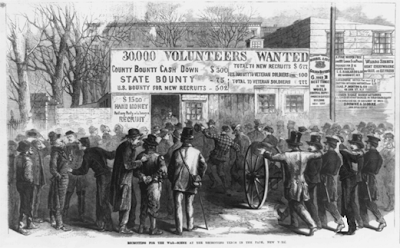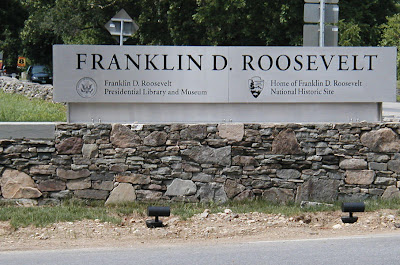 The National Women’s Hall of Fame has announced the upcoming induction of eleven American women who have made valuable and enduring contributions to our nation. These women will be formally inducted on September 30th and October 1st, 2011 in Seneca Falls, the birthplace of the American Women’s Rights Movement.
The National Women’s Hall of Fame has announced the upcoming induction of eleven American women who have made valuable and enduring contributions to our nation. These women will be formally inducted on September 30th and October 1st, 2011 in Seneca Falls, the birthplace of the American Women’s Rights Movement.
The National Women’s Hall of Fame is the nation’s oldest membership organization recognizing the achievements of great American women. Inductees are selected every two years based on their lasting contributions to society through the arts, athletics, business, education, government, humanities, philanthropy and science. From a group of over 200 completed nominations, a national panel of judges conducted a rigorous scoring process and selected eleven women for Induction.
The National Women’s Hall of Fame 2011 Inductees are:
St. Katharine Drexel (1858 – 1955) – A missionary who dedicated her life and fortune to aid Native Americans and African Americans, Saint Katharine Drexel is only the second recognized American-born saint. In 1891, Saint Katharine founded the Sisters of the Blessed Sacrament, a religious order that today remains devoted to the education and care of Native Americans and African Americans. During her lifetime, Saint Katharine and her order founded more than sixty missions and schools, including Xavier University of Louisiana. Saint Katharine was beatified in 1988 and canonized in 2000.
Dorothy Harrison Eustis (1886 – 1946) – A philanthropist, Dorothy Harrison Eustis combined her love of animals and her passion for helping others to co-found the nation’s first dog guide school, The Seeing Eye. In 1921, Eustis began her career in Switzerland, breeding German shepherds for civic duty. She was later contacted by Morris Frank, a blind American man seeking a guide dog. After bringing Frank to Switzerland and providing him with a dog, Eustis returned to the United States, and in 1929, they established The Seeing Eye to help blind people achieve greater independence, dignity and self-confidence through the use of Seeing Eye dogs. To date, The Seeing Eye has bred and trained 15,000 dogs to assist nearly 8,000 men and women.
Loretta C. Ford (1920 – ) – An internationally renowned nursing leader, Dr. Loretta C. Ford has devoted her career to practice, education, research, consultation and the delivery of health services. Dr. Ford is best known for co-founding the nurse practitioner model through her studies on the nurse’s expanded scope of practice in public health nursing. In 1972, Dr. Ford became the founding dean of the University of Rochester School of Nursing, where she implemented the unification model. Dr. Ford is the author of more than 100 publications and has served as a consultant and lecturer to multiple organizations and universities.
Abby Kelley Foster (1811 – 1887) – A major figure in the national anti-slavery and women’s rights movements, Abby Kelley Foster is remembered for her roles as a lecturer, fundraiser, recruiter and organizer. In 1850, Foster helped develop plans for the National Woman’s Rights Convention in Massachusetts, and later, in 1868, she was among the organizers of the founding convention of the New England Woman Suffrage Association. During her lifetime, Foster worked extensively with the American Anti-Slavery Society, where she held several different positions within the organization. Foster worked tirelessly for the ratification of the fourteenth and fifteenth amendments and helped lay the groundwork for the nineteenth amendment to the U.S. Constitution.
Helen Murray Free (1923 – ) – A pioneering chemist, Helen Murray Free conducted research that revolutionized diagnostic testing in the laboratory and at home. Free is the co-developer of Clinistix, the first dip-and-read diagnostic test strips for monitoring glucose in urine. Along with her husband, Alfred Free, she also developed additional strips for testing levels of key indicators for other diseases. Today, dip-and-read strips make testing for diabetes, pregnancy, and other conditions available in underdeveloped regions of the United States and in foreign countries. Free is the recipient of numerous awards, including the National Medal of Technology and Innovation and the American Chemical Society’s 66th National Historic Chemical Landmark designation (2010).
Billie Holiday (1915 – 1959) – Considered by many to be one of the greatest jazz vocalists of all time, Billie Holiday forever changed the genres of jazz and pop with her unique style. Holiday began her career as a singer in Harlem nightclubs in 1931, without formal musical training. She went on to record and tour with a number of famous musicians like Benny Goodman and Lester Young, and officially began recording under her own name in 1936. Holiday, known for her deeply moving and personal vocals, remains a popular musical legend more than fifty years after her death.
Coretta Scott King (1927 – 2006) – One of the most celebrated champions of human and civil rights, Coretta Scott King, in partnership with her husband, Dr. Martin Luther King, Jr., ignited democracy movements worldwide. For over forty years, King traveled extensively as a messenger of peace, justice and social action. Notably, in 1974, she formed and co-chaired the National Committee for Full Employment, formed the Coalition of Conscience (1983), and co-convened the Soviet-American Women’s Summit (1990). In 1969, she became the founding president, chair and chief executive officer of The King Center, the first institution built in memory of an African American leader. As a lifelong advocate for non-violence and coalition building, King’s legacy will continue to serve as an example for years to come.
Lilly Ledbetter (1938 – ) – For over a decade, Lilly Ledbetter has fought to achieve pay equity. Upon retiring from her position as a manager with the Goodyear Tire and Rubber Company, Ledbetter discovered that she had been paid considerably less than her male colleagues. She filed a formal complaint with the Equal Employment Opportunities Commission and later initiated a lawsuit against Goodyear alleging pay discrimination. Although a jury initially awarded her compensation, the Supreme Court ruled that Ledbetter could not receive any money because she had filed her complaint more than 180 days after receiving her first discriminatory paycheck. Since then, Ledbetter has continuously lobbied for equal pay for men and women- her efforts proved successful when President Obama signed the Lilly Ledbetter Fair Pay Act into law in 2009.
Barbara Mikulski (1936 – ) – The first female Democratic United States Senator elected in her own right, Barbara Mikulski has been a political trailblazer for more than thirty years. During her tenure as a Senator, Mikulski has developed and supported legislation promoting equal healthcare for American women, Medicare reform, better care for veterans, greater student access to quality education, increased funding for scientific research, and more. Senator Mikulski currently serves as the Dean of the Women in the Senate, and is a senior member of the Health, Education, Labor and Pensions Committee- a senior member of the Appropriations Committee- and a member of the Senate Select Committee on Intelligence. In 2011, Senator Mikulski officially became the longest serving female Senator in United States history.
Donna Shalala (1941 – ) – A groundbreaking educator and politician, Dr. Donna Shalala has more than twenty-five years of experience as an accomplished scholar, teacher and administrator. Dr. Shalala is recognized as the longest serving Uni
ted States Secretary of Health and Human Services (1993-2001) and is the current President of the University of Miami. From 1980-1987, Dr. Shalala served as the president of Hunter College, and from 1987-1993, she was the chancellor of the University of Wisconsin-Madison. Dr. Shalala is the recipient of more than three dozen honorary degrees and was awarded the Presidential Medal of Freedom in 2008.
Kathrine Switzer (1947 – ) – As the first woman to officially enter the Boston Marathon (1967), Kathrine Switzer broke the gender barrier and paved the way for women in running. Still recognized as a leader in the running world, Ms. Switzer has completed over thirty-seven marathons and has dedicated her career to creating opportunities and equal sport status for women. In 1977, she founded the Avon International Running Circuit, and in 1984, she was a leader in making the women’s marathon an official event in the Olympic Games. Ms. Switzer is an Emmy Award-winning television commentator who has broadcasted for ABC, CBS, NBC and ESPN.
“From an early suffragist to a Civil Rights pioneer- from a university president to trailblazers in health and science- each of these women have demonstrated fortitude, perseverance, intelligence and hope. Their experiences provide both an example for each of us to emulate and a challenge for each of to embrace. What began in Seneca Falls comes full circle this October, when this phenomenal group of Inductees convenes in the birthplace of women’s rights,” said Christine Moulton, Executive Director of the National Women’s Hall of Fame.
The National Women’s Hall of Fame, founded in 1969, has inducted 236 women since its inception. This year’s Inductees will join a notable group that includes Susan B. Anthony, Dr. Dorothy Height, Maya Lin, Sandra Day O’Connor, and Rosa Parks.
Also, the National Women’s Hall of Fame has launched a new website. Designed by CNY Media Group, the site allows visitors to read about this year’s Inductees, view a complete list of all Hall Inductees, and make plans to attend Induction Weekend 2011.
Photo: Billie Holiday by Carl Van Vechten.




